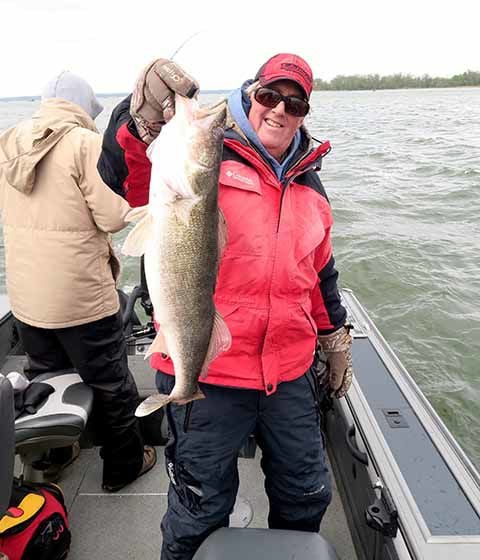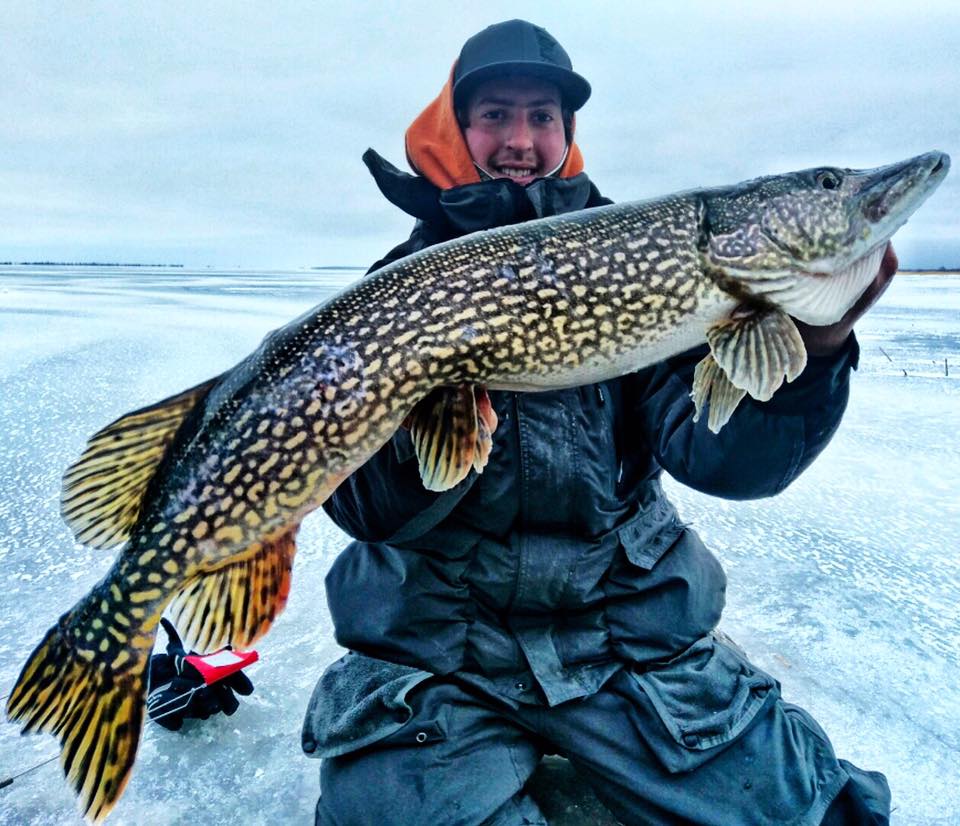- Leech Lake Northern Pike Slot Jackpots
- Leech Lake Northern Pike Slot Machines
- Leech Lake Northern Pike Slot Tournaments
- Leech Lake Northern Pike Slot Limit
Fishing Tips and Resources for Leech Lake. Seasonal patterns and presentations for walleye, northern pike, muskie, bass, perch, sunfish, crappie and eelpout. Information provided by Leech Lake’s legendary fishing guide and MN Fishing Hall of Fame inductee, Al Maas. The state law on inland lakes for northern pike is 1 over 30 inches of your limit of 3 pike total. Again check your regulation on the lake you plan to fish for special slot for northern pike. A lot of lakes have a special release clause on northern pike. Leech Lake Fishing Tip One of the most productive presentations has been a 48” gold spinner on a 1 ½ or 2 oz. Bottom bouncer with a Berkley Power Worm or Gulp crawler in natural color. Dusk into dark is an extremely productive time, but cranks will work all day long also. Walleye Slot Limit Leech Lake 2019 Slot Limits on the Wisconsin River. The regs seem to be working as me and my son have both caught and released personal bests in the last three years. The 2005 Leech Lake fishing regulations — which have been in place since that year — limit each angler to a total of 4 walleye. In addition, anglers were required to immediately release any walleye measuring between 20 and 26 inches, and only one walleye over 26 inches could be included in a total of 4.
The third largest lake in Minnesota at approximately 112,000 acres with a maximum depth of over 150 feet in Walker Bay. The main basin that includes Sucker Bay and Portage Bay has a maximum depth of about 40 feet and an average depth of 20 feet. Nearly 80 percent of the lake is less than 35 feet deep.Leech Lake is known as a multi-species fishery, including excellent fishing opportunities for Walleye, Muskie, Jumbo Perch (8”-14”), Northern Pike, Largemouth Bass, Smallmouth Bass, Sunfish, and Crappie.
Leech Lake is known as a world class Muskie fishery. Catch-and-release is strongly encouraged to protect this exceptional fishery. Consider getting a fiberglass reproduction of any size Muskie including those over 54”. Take a colored picture, get an accurate length measurement and an accurate girth measurement. Girth is best measured with a fabric ruler around the fish at its widest point.
Primary Predator Species:
Walleye, Muskie and Northern Pike.
Principal Forage:
Perch and Cisco.
Current Walleye Slot:
All walleye between 20-26 inches long must be immediately returned to the water, a possession limit of 4 walleye with one longer than 26″ allowed in possession.
Current Muskie Slot:
All Muskie under 54” must be released with a possession limit of 1.
Spring Walleyes (opener to mid June) are found close to the sand, rock and gravel shorelines. The bait of choice are shinners, locally known as “walleye candy” Concentrate on windswept points and shorelines. Use as small of a jig as possible (1/16 to 1/8 ounce) and fathead minnows may be used in the absence of shinners. Jig color can be a factor. When fishing with several people try various colors to see if there is a preference that day. Green is a great color to start with but also have blue, pink, orange, and yellow as well as blends of 2-3 of these colors. In windy conditions walleyes are caught as shallow as 4ft, a depth over looked by many.By early summer, walleyes leave the shoreline zones and move to sand/gravel points, weedbeds, flats and rock reefs, feeding on small perch and crayfish. Slowly troll a Lindy rig tipped with a leech or crawler along the weed edges and drop-offs.
The lack of wind can make Leech Lake walleye fishing difficult, especially if those conditions continue for several days. If you are hungry for a walleye dinner try evening fishing on those days. Trolling crankbaits in 8-12ft after dark will often take fish that are virtually impossible to catch during the daylight hours.
In August the key is covering water and the method of choice is trolling crankbaits in 10-14ft. As the water temps drop below 65 they return to the spring locations and a jig and minnow bite. Fatheads and Rainbows are good minnow options.
Early season Muskie action is best in the shallow bays that develop submergent and emergent weed growth. Portage, Boy, Sucker and Steamboat bays are all good early season choices. Bucktails or Jerkbaits retrieved over the developing cabbage and coontail beds are effective at this time of year. Black is a great starting point for color. As the water temps increase so should your retrieval speed. You can not go to fast for a Muskie in warm (mid to upper 70’s) watertemperatures.
Shallow rocks on the windward side of a reef can be particularly good. Top water baits are suggested to effectively work the shallow rocks. Submarine Island and the entire reef complex around Pelican Island always hold good numbers of fish. The end of September start looking at rocky shorelines. Fishing pressure for Muskie during fall is extremely light and is the best time to land a trophy. Mid October to ice up Walker Bay is the top Muskie location as they fatten up on Tullibee. Troll deep-diving crankbaits along the deep weed edges or find mid lake schools of Tullibee.
'Winter anglers on Mille Lacs Lake will enjoy a walleye harvest this winter for the fifth season in a row. Starting Tuesday, Dec. 1, anglers will be allowed to keep one walleye between 21-23 inches or one fish longer than 28 inches. This is the same regulation as the last two winter seasons.
“It’s good news that anglers will be able to harvest walleye again this winter,” said Sarah Strommen, commissioner of the Minnesota Department of Natural Resources. “Conservative management continues to sustain good fishing on Mille Lacs.”
Mille Lacs was a popular ice fishing destination during the winter of 2019-2020, in part due to poor ice conditions on other large Minnesota lakes. Anglers put in a record of more than 3 million fishing hours on the lake last winter. In each of the previous three winters, anglers spent about 2 million hours fishing on Mille Lacs.
“We want to provide anglers the opportunity to catch and keep some fish when the walleye population can support it,” said Brad Parsons, DNR fisheries section manager. “As in recent winters, we’re confident that the walleye population is abundant enough to support some harvest.”
Winter regulations are set after the DNR completes its annual fall netting assessment. The DNR’s 2020 assessment found that the walleye population has remained relatively stable over the past four years, having rebounded from population lows seen from 2012 to 2016.


Harvest from the winter of 2020-21 will be counted toward the state’s annual share of walleye from Mille Lacs under the 1837 treaty. State anglers share harvest with eight Ojibwe tribes that have fishing rights under the treaty.
The state’s allowable harvest for the coming year will be set in early 2021 through discussions between the state and the tribes. The DNR will set open water fishing regulations in March 2021 following discussions with the tribes and the Mille Lacs Fisheries Advisory Committee and after the conclusion of winter fishing.
Conservative fishing regulations in response to population lows have contributed to the recovery, allowing the DNR to offer anglers a harvest opportunity in recent winters and in May 2019 during the open water fishing season.
Insights from fall assessments
While encouraged by the rebound in walleye abundance, the DNR is taking a cautious approach to managing Mille Lacs’ walleye fishery. Survival of walleye to age 3 and older has been inconsistent in recent years.
The 2013 year class – that is, fish born in 2013 -- continues to be the most abundant class of fish. These fish are mainly 17-21 inches long, with faster growing individuals exceeding 21 inches. Year classes from 2009 to 2012 were weak, and had low numbers grow to adults, while those produced since 2013 have had more fish survive to adulthood.
The 2014 year class is below average compared with those from the last 15 years. The 2015 and 2016 year classes appear close to average, and the 2017 year class is well above average. Since 2008, only the 2013 and 2017 year classes have been above average.
“We are encouraged to see additional year classes that will be contributing to the fishery,” Parsons said. “Having multiple year classes approaching maturity makes us comfortable with continuing to harvest some of the 2013 year class under this winter’s regulation.”

Leech Lake Northern Pike Slot Jackpots
The assessment also looks at food abundance and walleye health. Perch and tullibee are the primary food source for Mille Lacs’ walleye. Perch and tullibee from 0 to 2 years old were caught in moderate numbers.
Leech Lake Northern Pike Slot Machines
Walleye condition, often referred to as plumpness, remained lower than recent averages. The relatively thin condition of fish suggest that forage was limited during parts of this year.
That lack of food contributed to the high catch rates in Mille Lacs early this summer. But that rate dropped in August and September, suggesting that the availability of forage improved later in the summer as fish hatched in 2020 grew and became a part of walleye diets.
“A lower catch rate in the late summer can sometimes carry over into the winter if forage is abundant,” Parsons said. “But predators also can reduce available forage later in the winter, possibly leading to an improved bite.”
Leech Lake Northern Pike Slot Tournaments
Leech Lake Northern Pike Slot Limit
Information about Mille Lacs Lake, including complete fishing regulations, is available on the DNR website at mndnr.gov/millelacslake.'
